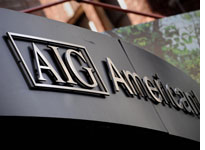
On Tuesday the U.S. government agreed that the Federal Reserve would supply $85 billion to bail out American International Group, the world's largest insurance company. Does the government really have a spare $85 billion lying around just in case?
Yes. There's no stack of unused money gathering dust in the federal coffers, but the Federal Reserve can always raise cash by selling off some of the securities it keeps in reserve. The Fed maintains a massive balance sheet that shows exactly what its assets are; right now, its reserves are estimated to be less than $200 billion, down from $800 billion at the beginning of this year. These reserves take the form of securities, often purchased from the U.S. Treasury. The securities function as a kind of "under the mattress" stash that can easily be converted into cash on the open market.
In fact, the government didn't actually hand over any cash to AIG today. Rather, the bailout deal represents an assurance from the Fed that an $85 billion loan will be available to AIG at any point during the next 24 months. If and when the company decides it wants the money, it will supply the Federal Reserve with the routing number of its clearing bank—an institution that specializes in transferring securities from one institution to another—and an electronic transfer of funds would be made.
The AIG deal may not end up being for the full $85 billion. It is what's known as a "bridge loan," meaning that the Federal Reserve is offering to lend the money for the short term, at a fairly steep interest rate. AIG doesn't have to take it all, which is precisely the point—the lousy terms of the loan give the company an incentive to find other sources of cash.



No comments:
Post a Comment